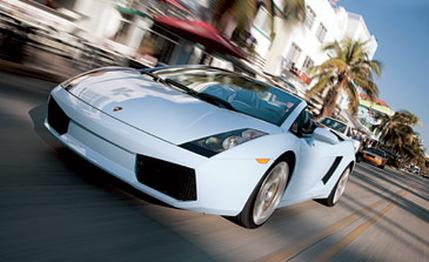 First Drive Review
First Drive Review
The debut of the Lamborghini Gallardo spyder at the 2005 Frankfurt auto show came as a surprise to no one. That's because the Gallardo's direct competitor, the entry-level Ferrari (currently the F430 model), has come in a convertible form since the mid-1990s-and it has sold well (the topless F360 commanded more than its $192,800 sticker price for its entire four-year life cycle). So it was only a matter of time before Lamborghini got into the act.
In typical Lamborghini fashion, the Gallardo spyder outdoes its Ferrari competitor, at least on paper. Its V-10 is now pumped to 512 horsepower, 29 more than the Ferrari V-8 makes. With its shorter gearing, the Gallardo spyder should improve on the 4.4-second blast to 60 mph that we recorded in the standard Gallardo. It continues to a top speed of 195 mph-2 up on the Ferrari.
The Gallardo's shape seems particularly well-suited for a roadster. The razor-sharp lines are even more accentuated with the top lowered. In combination with the steeply raked windshield and multitude of air intakes, the spyder's occupants could easily imagine they're in a fighter jet.
The top, built by German roof specialist Edscha, is fully automatic. It opens in about 10 seconds, powered by six hydraulic cylinders pressurized by an electric pump. When you press the button on the tunnel to peel back the cloth roof, the vertical rear window lowers first. Then the enormous but feather-light carbon-fiber engine cover rises and slides backward, exposing the well that will receive the top. With the top retracted, the engine cover slides forward and the rear window rises to act as a wind deflector.
Behind the wheel, the Gallardo spyder has the same mix of unique touches and Audi-based switches and central console seen in hardtop Gallardos. The only item exclusive to Lamborghini is the carbon-fiber-trimmed transmission tunnel that has pushbuttons for activating the fully automatic mode of the automated manual transmission, tuning the suspension for sport mode, and deactivating the stability program.